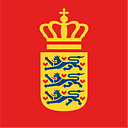Danish Literature with a Global Perspective
Writer and translator Katrine Øgaard Jensen on the upcoming virtual panel event Danish Authors You Should Know
The Fall 2020 virtual event season has begun and New York’s Scandinavia House is welcoming it with a new series of online panels devoted to Nordic Authors You Should Know. And what better way to inaugurate an event series of such caliber than with a specific focus on Danish literature!
On September 29 at 2 PM ET, Scandinavia House will host Danish writers Shadi Angelina Bazeghi, Jonas Eika, Maja Lee Langvad, Dorthe Nors, and Ursula Andkjær Olsen for Danish Authors You Should Know — a virtual conversation on the state of Danish literature today.
Moderated by Katrine Øgaard Jensen, founding editor of EuropeNow, Acting Director of Literary Translation at Columbia University and winner of the 2018 National Translation Award, the event will kick-off with short readings of each of the authors’ work in both English and in Danish.
Denmark In New York caught up with Katrine Øgaard Jensen to discuss Danish literature in the United States and what she expects from the panel event.
Denmark In New York: We would like to start with the September 29th virtual panel Danish Authors You Should Know which you will be moderating on behalf of Scandinavia House here in New York City. How would you characterize the group of Danish authors selected for this panel and what are some of the similarities or differences between them?
Katrine Øgaard Jensen: Generally speaking, we have poets and fiction writers on the panel, and some of them cross genres in interesting ways as well. Some have multiple cultural belongings that they explore in their writing, while others have been influenced by international literature, the global economy, and the world around them in various ways.
All of these authors’ writings relate to Denmark and Danish culture in one way or another, but they also have a global perspective and a universality in the themes addressed in their writing.
Do you see any specific trends or themes in Danish literature right now?
Katrine Øgaard Jensen: I have definitely noticed some themes or topics, but that’s something I’m excited to talk to the panelists about on the 29th so I wouldn’t want to spoil the fun by imposing my own ideas of what’s happening in Danish literature right now — I would much rather hear it from the authors who are actually part of the Danish literary scene on a daily basis.
I’ve lived in New York City for the past nine years, and while I’ve been following the Danish literary news as much as I can from here, I look forward to moderating this event and learning the many answers to this question from the authors themselves.
What are some of the challenges faced by Danish contemporary authors (and their publishers) when they enter the US literary scene, and why do you think it’s interesting for American readers to dive into Danish literature, in particular, and literature in translation in general?
Katrine Øgaard Jensen: The biggest challenge is the infamous Three Percent Problem, the problem that only about three percent of all books published in the US (and in the UK as well) are works in translation. This number has been tossed around a lot, and I recommend that anyone interested in more information looks up the Three Percent Problem to study the different writings on it. Some have pointed out that the actual number is even lower, but the point is: it’s a very small number compared to many non-Anglophone countries where between thirty and sixty percent of books published are translations. So I think that it should not only be interesting but also important to Americans to read literature in translation, and to bring that number up for the sake of cultural diversity.
In terms of Danish literature specifically, I think something Danish writers do well is write with razor sharpness and violent precision about uncomfortable topics. US readers who associate Denmark with hygge are somehow delighted by this dark reading experience, perhaps because it’s coming from one of the reportedly “happiest countries in the world,” which is interesting and maybe a little unexpected.
How do you feel Danish readers differ from American audiences?
Katrine Øgaard Jensen: They read much more literature in translation!
You have translated some of the authors represented on the panel. What do you think is the biggest challenge in translating from Danish to English?
Katrine Øgaard Jensen: I think the biggest challenge is the fact that one Danish word usually can be translated into quite a few English words, all of which have slightly different shades of meaning. The translator has to make numerous choices on behalf of the author in order to bring the slightly “vague” Danish into a more specific English. If something is uhyggeligt in Danish, for instance, the translator has to decide whether it is uncanny, spooky, eerie, ghastly, scary, chilling, or perhaps even terrifying or horrifying, in the context of the literature they’re translating. That in itself can be slightly uhyggeligt, especially if you’re translating perplexing poetry!
Danish Authors You Should Know will be broadcast live via Zoom on September 29th at 2:00 PM ET. Register here.
Mona Raben Eisby is the Culture and Public Diplomacy Intern at Denmark in New York.
